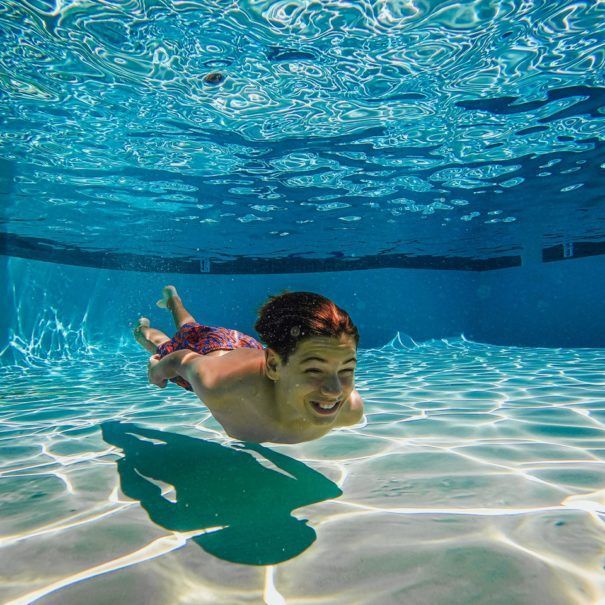What Can I Do to Help My Child Feel Comfortable Putting Their Face in the Water?

Learning to swim can be a fun adventure, but some parts of it are more difficult than others to get the hang of. For some children, the most difficult thing to do is to learn how to put their face in the water. It’s a perfectly understandable difficulty. People are meant to breathe air, not water, after all. Still, learning to be comfortable with putting your face in the water is an essential part of learning to swim. So what can you do as a parent to help?
Start on Dry Land
Part of what makes children nervous about putting their faces in the water is the fact that they can’t breathe underwater. That makes learning how to hold their breath and breathe out while their faces are immersed an important part of becoming comfortable having their faces in the water. Start things out simple on dry land by having them practice holding their breath. Once they’re comfortable with holding their breath, try splashing water over their faces and heads.
Blow Bubbles
Every child loves blowing bubbles. Take advantage of that and use it to help them get more comfortable with putting their faces in the water. Have your child lower their face into the water until it covers their chin and have them blow bubbles on the surface. You can practice this in a pool or in the bathtub at home. Have them gradually increase how much of their face is under the water so they can get used to it.
Use Games for Practice
Once your child has immersed their face in the water, it’s time to help them feel so comfortable with it that they don’t have to think about it. One of the best ways to do this is to make it fun. Play games that involve your child putting their face in the water when you’re at the pool. Have them find toys under the water or come up with your own fun game.
Helping your child become more comfortable with putting their face in the water can go a long way towards helping them become a better swimmer. Find time outside of swim lessons to help them work on building their confidence, even if it’s just dry land practice or time spent blowing bubbles in the bathtub. The sooner they become comfortable putting their face in the water, the faster they’ll become a better swimmer.
Knowing what to do in an emergency can save someone’s life. Click here to learn about SwimJim’s guidelines for what to do in an emergency today.
The post What Can I Do to Help My Child Feel Comfortable Putting Their Face in the Water? appeared first on Swim Jim.







